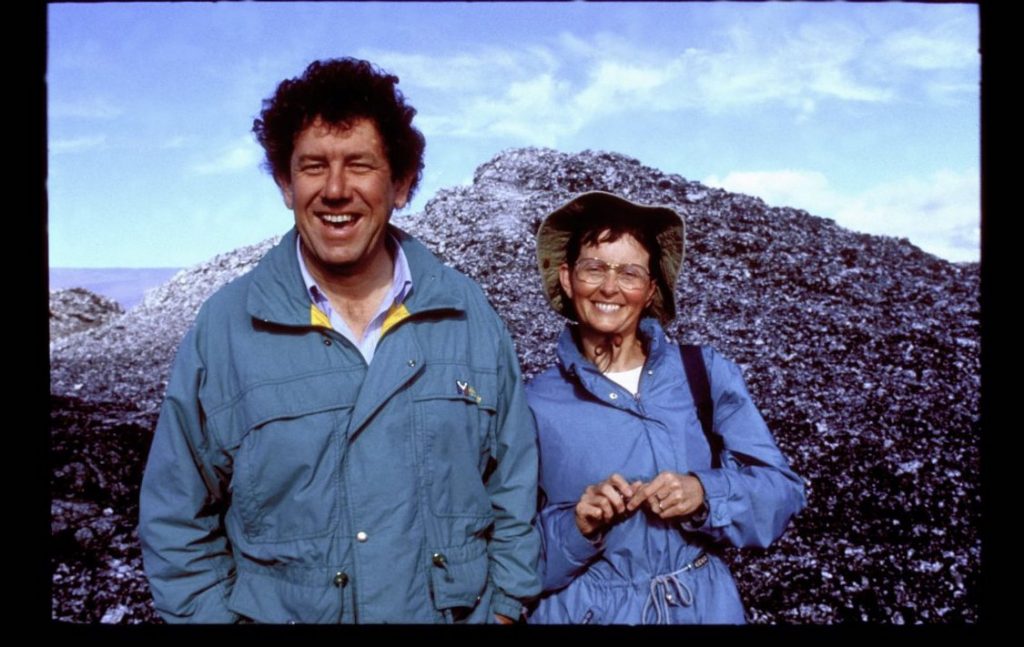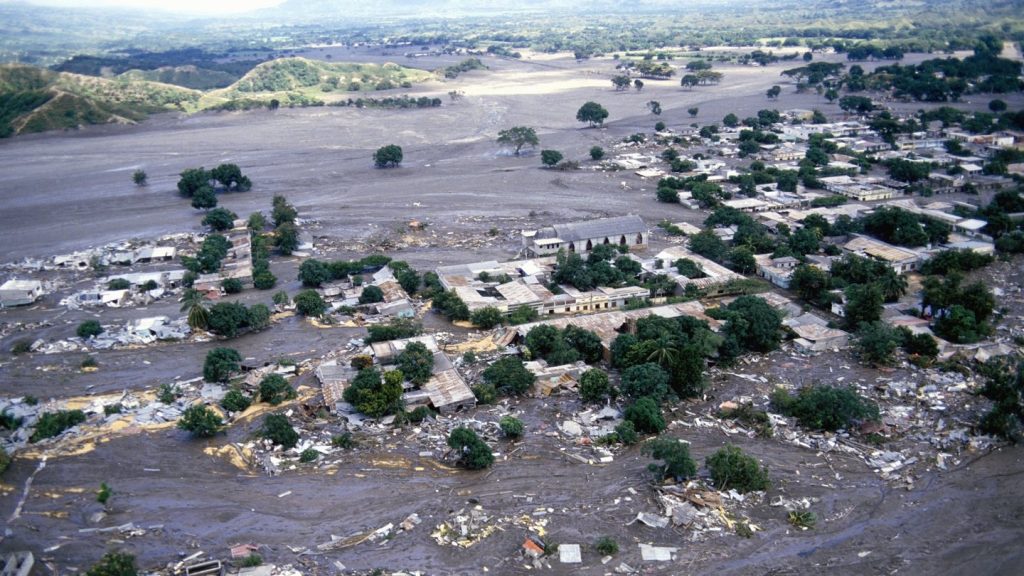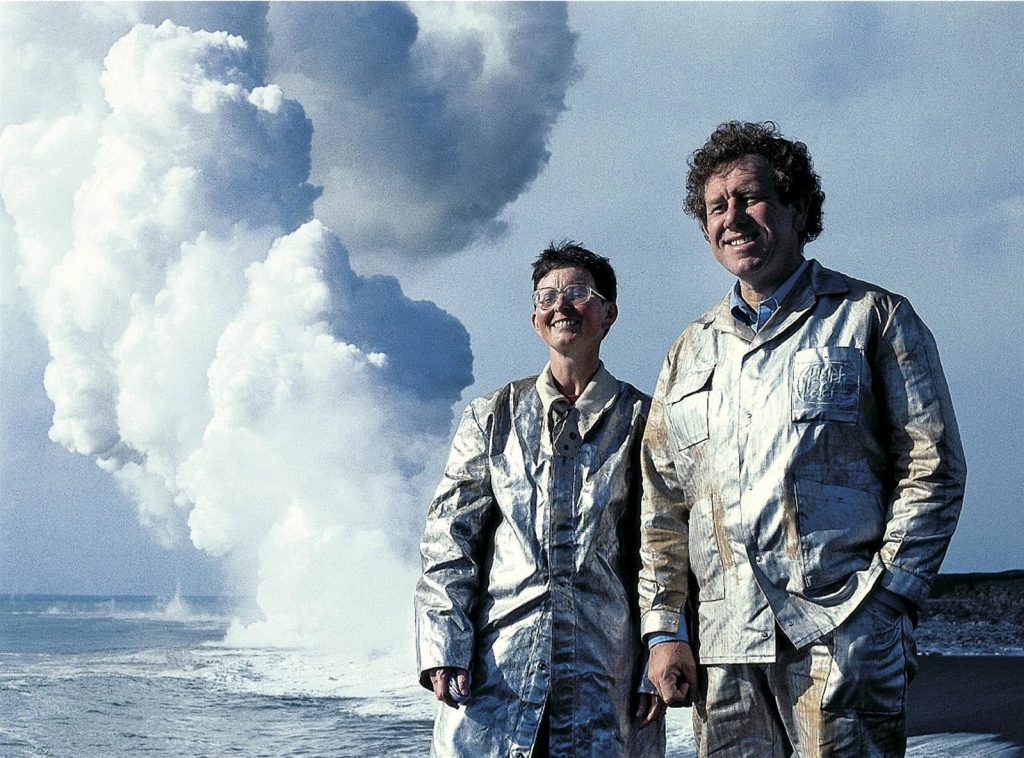What The Eruption Of The World’s Largest Volcano Has To Do With A 30-Year-Old Love Story
Mauna Loa is the world’s largest active volcano and it’s erupting for the first time in almost 40 years, but this story is just as much about love as it is volcanoes.
The recent eruption of Mauna Loa, located in Hawai’i, has been creating some pretty spectacular scenes. The sky has turned a luminous red and it’s been shooting lava up to 60 metres in the air. It’s one of the five volcanoes that make up the Big Island of Hawai’i, and it sits near volcano brother Kīlauea who has been continuously erupting since September 2021.
Mauna Loa’s eruption isn’t currently causing an immediate threat to residents but the situation could change pretty quickly, and if it does communities will know what to do thanks to the work of a couple who loved volcanoes so much that their research and passion shifted our response to volcanic eruptions.
A Love Story As Hot As Lava
Meet Katia and Maurice Krafft. They’re two volcanologists who dedicated their lives to understanding everything they possibly could about volcanoes. They met while studying at university in 1966, and they quickly hit it off over their shared fascination for volcanology. From their love of volcanoes, came their love of each other and they got married four years later.

(Image: In the wake of Mauna Loa erupting in Hawai’i, we know when to evacuate thanks to French volcanologist love birds Katia and Maurice Krafft)
Whenever the Kraffts would hear of an active volcano beginning to erupt, they’d drop everything to make it to the destination. In fact, they’d often be the first ones on the ground with their equipment and cameras ready to record the impending eruption.
Throughout their lives they captured hundreds of hours of footage and took millions of photos of active volcanoes. Their research and documentation of volcanoes has forever enriched our knowledge of the world around us. But their research also did something extraordinary, it taught us how to respond to volcanic eruptions.
A Legacy Of Love
Through their rigours years of work they gained the trust of local communities and governments to ensure that local residents would be evacuated in the wake of an eruption, and as a result the Kraffts have saved hundreds of thousands of lives.
Their journey into advocacy began because of an eruption at Mount St. Helens in the US. Previously they had mostly studied what they called “red” volcanoes. Red volcanoes are considered slightly safer and are caused by tectonic plates pulling apart.
However the volcano at Mount St. Helens is the more dangerous type of volcano, which the Kraffts dubbed as “grey” volcanos. These types of volcanoes spew ash into the air and are caused by tectonic plates colliding. Sadly the episode at Mount St. Helens killed around 57 people, and this incident inspired the Kraffts to discover more about this lesser known volcano.
Their research would prove pivotal, like their documentation of the 1985 Nevado del Ruiz eruption in Columbia. Despite it being a small volcano, it produced an enormous volcanic mudslide that destroyed the town below and caused an estimated 25,000 deaths.

(The aftermath of the eruption of volcano Nevado del Ruiz in 1985. Image Credit: Getty Images)
A few years later in 1991 there was activity at Mount Pinatubo in the Philippines which could have resulted in a similar outcome to Nevado del Ruiz. The difference? It can be put down to the research and documentation undertaken by Katia and Maurice Krafft. Their work created a compelling body of evidence that convinced the president and sceptics to evacuate the danger zone, saving thousands of lives.

(Katia and Maurice Krafft stand side by side next to an underwater volcano. Image credit: CRI Nancy)
The Kraffts always knew the risk of their work and sadly they died doing what they loved, being on the ground at an eruption in Japan that same year in 1991.
Katia and Maurice truly had two great loves in their life, the first being each other and the second being volcanoes. As a pair they enabled each other to find that second love, and it’s said that alone they could only dream of volcanoes but together they could reach them.


